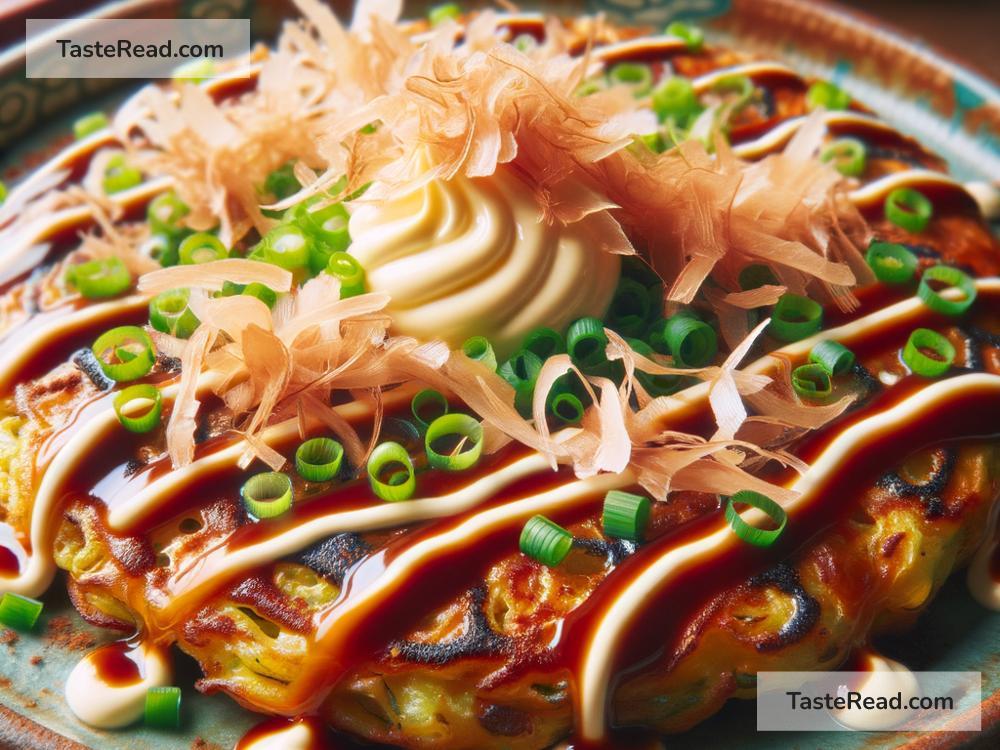How to Make Japanese Okonomiyaki: A Simple Guide
Japanese cuisine is famous for its variety and depth of flavors, offering dishes that appeal to every taste. Among these culinary treasures is Okonomiyaki, a savory pancake that is as delicious as it is fascinating. Okonomiyaki hails from Japan and is a beloved comfort food for many. Its name roughly translates to “as you like it” pancake, highlighting its customizable nature. This dish is perfect for those who love to experiment with flavors and enjoy a hands-on cooking experience. Here’s a simple guide on how to make Japanese Okonomiyaki at home.
Ingredients:
– 1 cup all-purpose flour
– 3/4 cup water
– 4 large eggs
– 4 cups chopped cabbage (about 1 medium head)
– 1/2 cup chopped green onions
– Optional: cooked shrimp, bacon slices, or any protein of choice
– Salt and pepper to taste
– Vegetable oil for frying
– Okonomiyaki sauce (available at most Asian grocery stores)
– Mayonnaise
– Shredded seaweed (nori) for garnish
– Bonito flakes for garnish
Step 1: Prep Your Ingredients
Begin by chopping your cabbage into thin strips and your green onions finely. If you’re adding any protein, make sure it’s cooked and cut into bite-size pieces. Some popular additions include thin slices of pork belly, cooked shrimp, or even octopus. This flexibility in ingredients is what makes Okonomiyaki a dish tailored to your preferences.
Step 2: Make the Batter
In a large bowl, mix 1 cup of all-purpose flour with 3/4 cup of water. Stir until you have a smooth batter. This will be the base of your Okonomiyaki. Next, add in 4 beaten eggs and mix until everything is well incorporated. This mixture will bind all your ingredients together, ensuring your pancake holds its shape while cooking.
Step 3: Add the Cabbage and Other Fillings
To your batter, add the chopped cabbage and green onions, stirring gently to combine. If you’re including additional protein or vegetables, now is the time to fold them into the batter. The key is to maintain a good balance of batter and fillings – the mixture should be chunky, not too doughy or overly packed with add-ins.
Step 4: Fry Your Okonomiyaki
Heat a tablespoon of vegetable oil in a non-stick pan over medium heat. Once hot, spoon your Okonomiyaki mixture into the pan. Aim for a round shape, about the size of a pancake, but feel free to make it as large or small as you like. Cook for 4-5 minutes on each side, or until golden brown and firm to the touch. If you’re using bacon or another flat protein, you can lay it on top of the pancake before flipping to cook the other side.
Step 5: Garnish and Serve
Once your Okonomiyaki is cooked, it’s time for the best part – topping it with delicious garnishes. Drizzle a generous amount of Okonomiyaki sauce over your pancake, followed by a zigzag of mayonnaise. These two condiments are essential, providing a perfect blend of sweetness and richness. Finally, sprinkle shredded seaweed and bonito flakes on top for an added burst of umami and texture. The heat from the pancake will cause the bonito flakes to dance, adding an entertaining visual to your meal.
Final Thoughts:
Okonomiyaki is a versatile dish that allows for endless creativity in the kitchen. Whether you’re a fan of seafood, crave the richness of bacon, or prefer a vegetarian option, you can tailor this dish to suit your taste. It’s a fun cooking activity to enjoy with family and friends, offering each person the chance to customize their pancake. Plus, the combination of fresh ingredients, hearty batter, and flavorful toppings makes Okonomiyaki a satisfying meal at any time of the day.
Now that you know how to make Japanese Okonomiyaki, it’s time to roll up your sleeves and start cooking. Gather your favorite ingredients, invite some friends over, and enjoy the process of creating this delicious, customizable treat. Once you’ve mastered the basics, don’t be afraid to experiment with new fillings and toppings – the possibilities are endless! Happy cooking!


